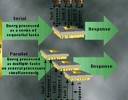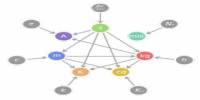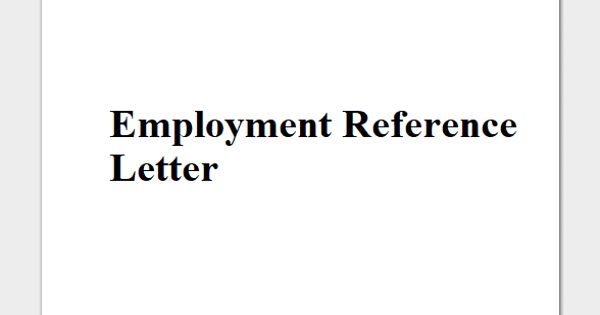Virtual Interactive Classroom (VIC) using Mobile Technology
ABSTRACT
Bangladesh Open University (BOU) is the only national institution in Bangladesh which is catering distance education in the country. It has extensive network throughout the country to provide readily accessible contact points for its learners. After passing of 15 years since its inception, BOU has lagged behind in using technologies. In consideration of its limit to conventional method in teaching, a project was undertaken to test the effectiveness and viability of interactive television (TV) and mobile’s Short Message Service (sms) classroom and explore the use of available and appropriate technologies to provide ICT enabled distance tuition. In this project, the mobile technology’s sms along with perceived live telecast was used to create ideal classroom situation for distance learning through the Question Based Participation (QBP) technique. The existing videos of BOU TV programmes were made interactive using this technologies and technique. The existing BOU TV programme and interactive version of the same were showed to same learners of BOU to evaluate its effectiveness. It is found from the study that this interactive virtual classroom significantly perform well in teaching than BOU video programmes (noninteractive) which is used at present. This paper will describe the idea of virtual classroom setting and how this is effective for distance teaching in Bangladesh. How far this idea is realistic, appropriate, cost effective and user friendly in rural Bangladesh. What will be the impact of this interactive classroom on the Distance teaching/learning mode of education in the Country.
INTRODUCTION
Bangladesh Open University (BOU) is the only open institution in Bangladesh. It was established in 1992 under the Act No. 38 of the Bangladesh Parliament. The objectives of BOU are “expand all levels of education, knowledge and science by a diversity of means, including the use of any communication technology to improve the quality of education and to provide opportunities for education to the general public through mass-orientation of education and to create efficient manpower by improving the quality of education in general” (Bangladesh Gazette, 1992). It uses tutorial classes, print materials, audio tapes and Radio- TV broadcasting of lectures for delivering its programmes. It has a wide network consisting of 12 Regional Resources Centres (RRCs), 80 Coordinating Offices (TCs) and more than 1000 Coordination Offices (COs) throughout the country. BOU has a sophisticated media centre with the facility of airing. The total number of students is about 0.5 million (BOU website).
At BOU, tutorial classes are conducted by hired teachers from Universities, Colleges Institutes, Government Offices, and High Schools according to the programmes. Usually, tutorial classes are held twice a month. The concept of tutoring at distance education is introduced to provide counseling to the students how do they study in distance and to provide guidelines in using ofdistance education materials and attending Radio/TV programmes including admission,examination and other related information. But, due to absent of interactions in other media of learning at BOU, learners demand lectures and interactions instead of counseling as stated above. As a result, tutorial classes at BOU seem like a lecturing on the subject matter rather than counseling. Moreover, the learners demand more tutorial sessions or interactions. Therefore, BOU is spending a considerable amount of money for its tutorial services towards the quality education.
The lectures airing by Radio/TV is only delivered by BOU academics and other subject specialists from other institutions. The time slots for Radio and TV is average 30 minutes for each medium per day. This is absolutely insufficient for broadcasting lectures for its 23 programmes. The following table shows the transmission of radio/TV programmes at BOU (2001-2005):
| Schools | TV | Radio |
| School of Education | 235 | 465 |
| School of Social, ScienceHumanities and Language
| 69 | 117 |
| Open School | 116 | 89 |
| School of Business | 107 | 89 |
| School of Agriculture and RuralDevelopment
| 121 | 20 |
| School of Science andTechnology | 104 | 133 Total |
| Tota | 752 | 992 |
Number of broadcast Radio & TV programmes at BOU
The data shows that average 13 TV lectures and 16 Radio lectures are aired per month for its 23 programmes. This is very low number of airing programmes in terms of effective delivery of teaching. Contrarary, this lectures delivered through Bangladesh TV (national television) is one way delivery. There is no interaction between teachers and learners. There are still questions how many learners attend the lectures? How do they enjoy the lectures? Is it effective? Are there any suggestions/comments from the learners to improve the delivery? Bangladesh is a country in the world to have exemplified a model for rural access to mobile phones through out the country quickly acclaimed initiatives of Grameen Phone Ltd. followed by other mobile companies (Hossain et al., 2005). According to Bangladesh Telecommunication Regulatory Commission (BRTC), there are 32.5 million mobile subscribers till July 2007 in the country. The number of mobile phone subscribers of different provider is appended below to show the flow of increasing rate of mobile users.
(Subscribers in millioen Phone Ltd)
| Operators | May 2007 | June 2007 | July 2007 |
| Grameen Phone Ltd.(GP) | 13.24 | 13.97 | 15.73 |
| TMIB (ROBI) | 5.55 | 5.05 | 6.67 |
| Sheba Telecom Ltd.(Banglalink) | 5.53 |
6.046.61PBTL(City Cell)1.271.301.31Teletalk Bangladesh Ltd. (Teletalk)0.870.890.91Airtel0.20
0.471.14Total26.2627.7232.37
Number of mobile phone subscribers
The table indicates how fast the density of mobiles in the community is growing up. Almost every single village in Bangladesh has bought under mobile network system. There are now many who can keep mobile phone due to low cost of its charges. According to different data sources the mobile charge per minute stands between on average US$ 0.03-0.06 and Short Messaging Services (SMS) cost is US$ 0.007 per SMS message. This information indicates that the mobile phone is affordable. The phenomenon of Short Messaging Services (SMS) is one that has been growing exponentially in many countries in Asia. Ramos (1995) argued that the greater mobility and lower cost of mobile phones compared to computers means that there are more people in the region who can afford and make use of mobile technology. In Bangladesh, peoples use SMS mainly for communication purposes. But the ubiquitous presence of mobile phone, use of SMS in rural and urban areas, and overcoming different social-economic and gender issues mean that there is great potentiality for using this technology in productive way.
A virtual classroom is a learning environment that exists solely in the form of digital content that is stored, accessed, and exchanged through networked computer and information systems. Everything in a virtual classroom occurs in an non-physical environment; students access the classroom by connecting to the internet, rather than travelling to a real, physical classroom (Creative Industries Faculty, QUT website). Virtual classroom means there will be electronic communication such as electronic mail, listservs, chat rooms (Powers & Mitchell, 1997) and that virtual class exists on the existing of technologies like computer, internet, radio and TV (Farrell, 2003). It shows that SMS technology is not mentioned as one of the possible means of virtual class for teaching and learning in distance mode. Ramos (2005) argued that more rigorious studies to determine the efficacy and feasibility of teaching through mobile SMS technology are stll laking. Therefore, considering the arguments stated above a study was conducted to test the efficacy and feasibility of virtual class integrating perceived broadcast Video and SMS technology using the Question Based Participation (QBP) technique.
STUDY DESIGN
Under this study, almost, an ideal classroom situation has been created integrating mobile SMS service and perceived telecast video and using multiple questions based participation by the students. The first demo of such video is developed in Orebro University by putting pedagogical inputs in a BOU video programme. Later on, this has been devloped at BOU. Then 2 vedios ( vedio 1- existing BOU vedio just incorporated questions and vedio 2- improved pedagogical aspects ) have been aired. The prior notice has been circulated via Radio and TV ( in BOU time slots) and print notice to the respective tutorial classes of BOU informing the date and time of airing of the video to the learners.. Vedio 2 are recorded with 2 learners participation in studio who answered many questions and interacted with teachers creating a classroom feeling. The distant learners have been asked to registrar and put forward the answers by mobile sms. The feedback was stored in computer server. The feebback was collected from the server and evaluted.
OBJECTIVE OF STUDY
Bangladesh Open University is the organization which caters education from 9th grade to university level. However, teaching methods are traditional. Education is badly lacking in rural areas and among the disadvantaged and poorer segment of population. This study focused on using electronic means to provide better education in such areas. BOU has a mandate to deliver education to all kinds of people by means of ICT. However, its traditional method of teaching doesn’t reflect interactive and student centered ways of teaching. Therefore, the study was conducted to focus on using affordable and user-friendly technology as a mean of effective delivery of teaching. Hence, the feasibility and efficacy of virtual interactive classroom (VIC) concept which is created by BOU perceived telecast vedio and mobile sms technology was investigated.
COMPARISON OF FEEDBACK MECHANISMS OF VIRTUAL INTERACTIVE CLASSROOM AND TRADITIONAL BOU VIDEO LECTURE
Many characteristics of the physical classroom have been carried over into the virtual classroom.They both employ a very similar “learning theory, curriculum design and pedagogy” (White, 2004, pp. 11-12). Additionally, the way in which an instructor delivers educational materials remains an important factor in the success of both classrooms (White, 2004, pp.11-12). A prominent difference between the physical classroom and the virtual classroom is the location and space that is required to access and participate in classroom activities. The comparison of BOU traditional video and VIC mediated video is illustrated below to have the features of these two ways of delivery.
| Aspects | BOU traditional Video |
LecturesVIC mediated lecturesFeedback from students
during lecturing
No, lecture is delivered
by teacher alone
Students present at lecturing. They are
allowed to participate in discussionInteraction during airing
of lecture
Not at all
Yes, students viewed the recorded video
by answering and voice calls. The server
responds to the student giving the
impression of a live show. However, the
students answered their question by SMS.
These are stored at server.Provision of evaluation
of lectures by studentsNo
Yes Analysis of students
response Not for evaluation of
lectures
Students’ answers are evaluated for further
improvement of lecturesTechnology usedVideoVideo & Mobile ParticipationTeachersTeachers and Students
Comparison between traditional video & VIC video programmes
CONCLUSION
This small scale research study is not enough to commend on the efficacy and efficiency of this virtual interactive Classroom idea. However, the study suggests that it is possible to develop VIC in Bangladesh and it may be argued that the students enjoyed the differences of BOU traditional video programmes and VIC supported video programmes. It is supported by Powers & Mitchell (1997, p.21) in a study of computer mediated virtual class that “it is possible to develop a community of learners and that students’ performance in and perceptions of a class remain positive”.
However, the very success of this research study is that it has attracted BOU policy makers and donor concerned to move forward to explore VIC method in large scale.
















